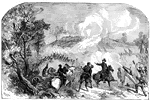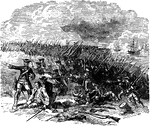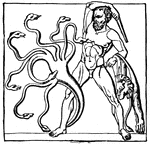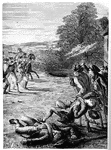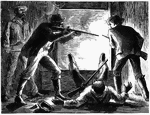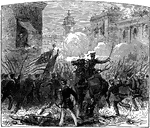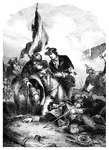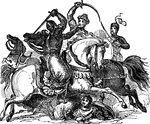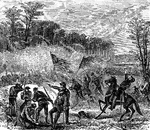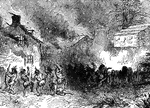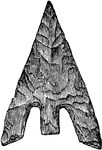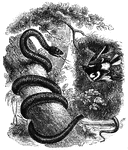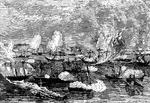
Passage of Forts Jackson and St. Phillip
Depiction of the battle on the Mississippi between Confederate and Union forces at Forts Jackson and…

Frankish Weapons, Including a Shield, Germanic Spear, Angon, Sword, Knife, and Short Axe
A collection of weapons used by the Germanic tribe called the Franks. These are all of their most typically…

Gabion
A gabion is an open cylinder made of brushwood, canvas, wire-netting, or iron bands used in fortification.…

Scene of the Battle of Gaines' Mill
Mill, with a man standing and a man on horseback in the foreground.

Battle of Gaines's Mill
"Battle of Gaines's Mill, Friday, June 27th, 1862. At eleven o'clock each division, brigade, regiment…

Gauntlet
The Gauntlet is a piece of protective armor for the hand, dating back to the 12th century. The first…

Gladiators
This illustration shows various types of gladiators, each type with with his specific weapons attributed…
Greek Soldiers in Arms
"From a Greek vase of about the time of the battle of Marathon."—Webster, 1913

Field Gun
A field gun is an artillery piece. Originally the term referred to smaller guns that could accompany…

Attack at Harrisonburg
"Gallant attack by 150 of the Pennsylvania Bucktails, led by Colonel Kane, upon a portion of General…
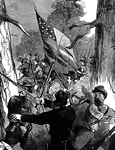
Attack at Harrisonburg
"Gallant attack by 150 of the Pennsylvania Bucktails, led by Colonel Kane, upon a portion of General…
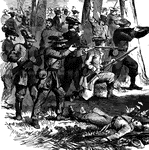
Attack at Harrisonburg
"Gallant attack by 150 of the Pennsylvania Bucktails, led by Colonel Kane, upon a portion of General…
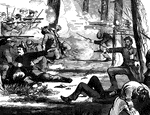
Attack at Harrisonburg
"Gallant attack by 150 of the Pennsylvania Bucktails, led by Colonel Kane, upon a portion of General…
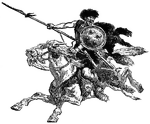
Hun Warrior on Horseback in Battle
Illustration of a Hun warrior riding on horseback, his mouth open as if to scream. The warrior has a…

Island Number Ten
Island Number Ten was a former island in the Mississippi River near Tiptonville, Tennessee and the site…

Bombardment of Island Number Ten
Island Number Ten was a former island in the Mississippi River near Tiptonville, Tennessee and the site…

James Island
"Repulse of the Confederates at James Island, near Charleston, S. C., June 10th, 1862, in the attempt…

Kearsarge Sinking the Alabama
The sinking of the Alabama by the Union Kearsarge. Some Confederates aboard the Alabama escaped to England…

Kentucky Raid
"The Confederate raid into Kentucky- the fight at the Licking Bridge, Cynthiana, between the Federal…
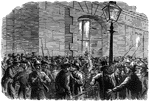
Kentucky Raid Rally
"The Confederate raid into Kentucky--excitement at Convington--gathering of armed Federal citizens at…

Knights-Banneret
"KNIGHTS-BANNERET. This ancient and honourable order has become extinct. It obtained the title of banneret…

The Mound at Marathon
"Near the southern extremity of the plain of Marathon rises a conical mound, 30 feet high. it covers…
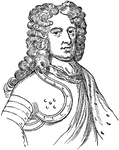
Duke of Marlborough
An English statesman who served in several battles during the late eighteenth century.
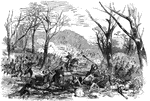
Battle of Mill Spring
"Battle of Mill Spring, on the Cumberland River, near Jamestown, between a confederate force, 8,000…

Battle of Mill Spring
"Battle of Mill Spring, on the Cumberland River, near Jamestown, between a confederate force, 8,000…
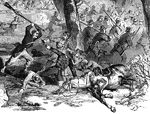
Battle of Mill Spring
"Battle of Mill Spring, on the Cumberland River, near Jamestown, between a confederate force, 8,000…

Battle of Mill Spring
"Battle of Mill Spring, on the Cumberland River, near Jamestown, between a confederate force, 8,000…
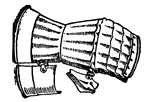
Mitten (Armor)
The 'mitten' superseded the gauntlet of the 14th century. Rather than having separate, unjointed fingers,…
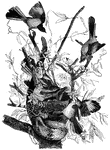
Mockingbirds Attacking a Rattlesnake
A flock of mocking-birds attacking a rattlesnake in a tree, which was threatening a nest.

The Great Naval Battle of the Mississippi
Passage of the second division of the Federal Squadron past Fort St. Philip. On April 24, 1862 at three…

Old Fort Frederick at Pemmaquid
During Dummer's War, the location was a rendezvous for returned inhabitants of Pemaquid and vicinity.…
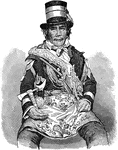
Oshawahnah
Tecumseh's deputy commander who led the Indians against American forces at the Battle of the Thames

Battle of Pea Ridge
"Battle of Pea Ridge, Ark., fought March 6th, 7th and 8th, 1862, between the Federal forces, 13,000…

